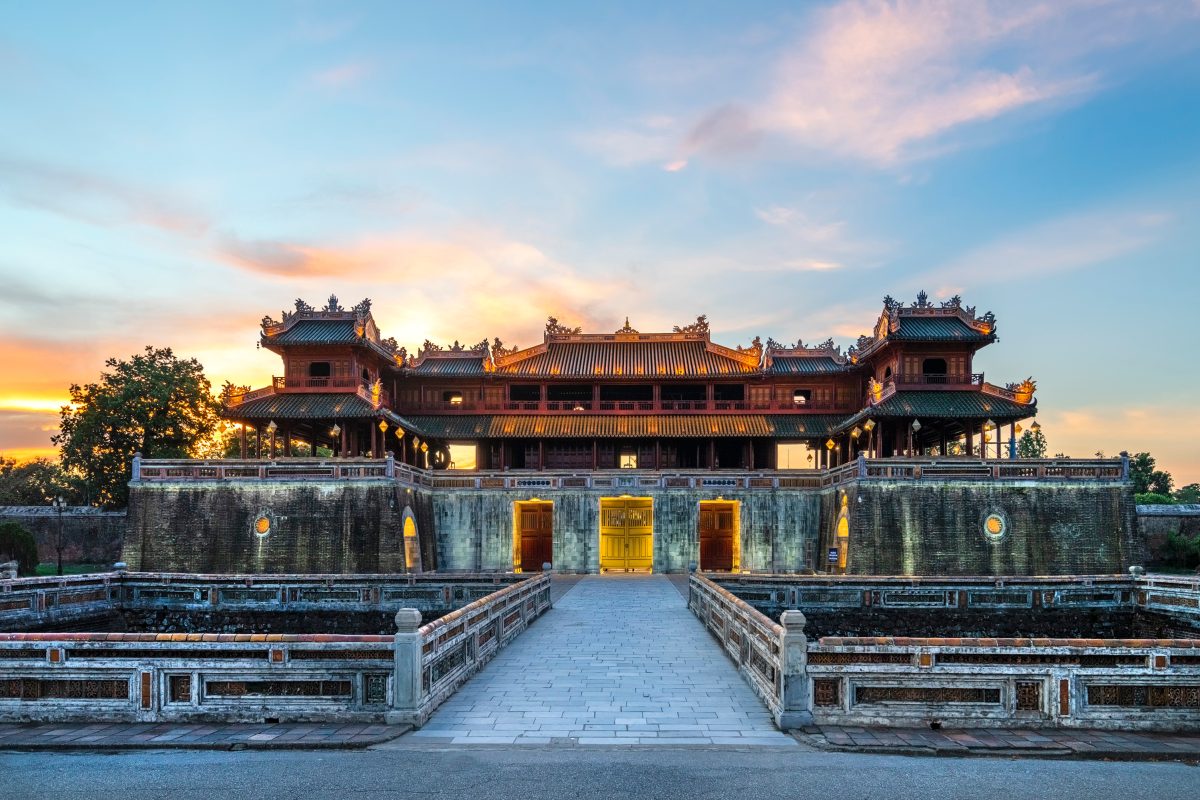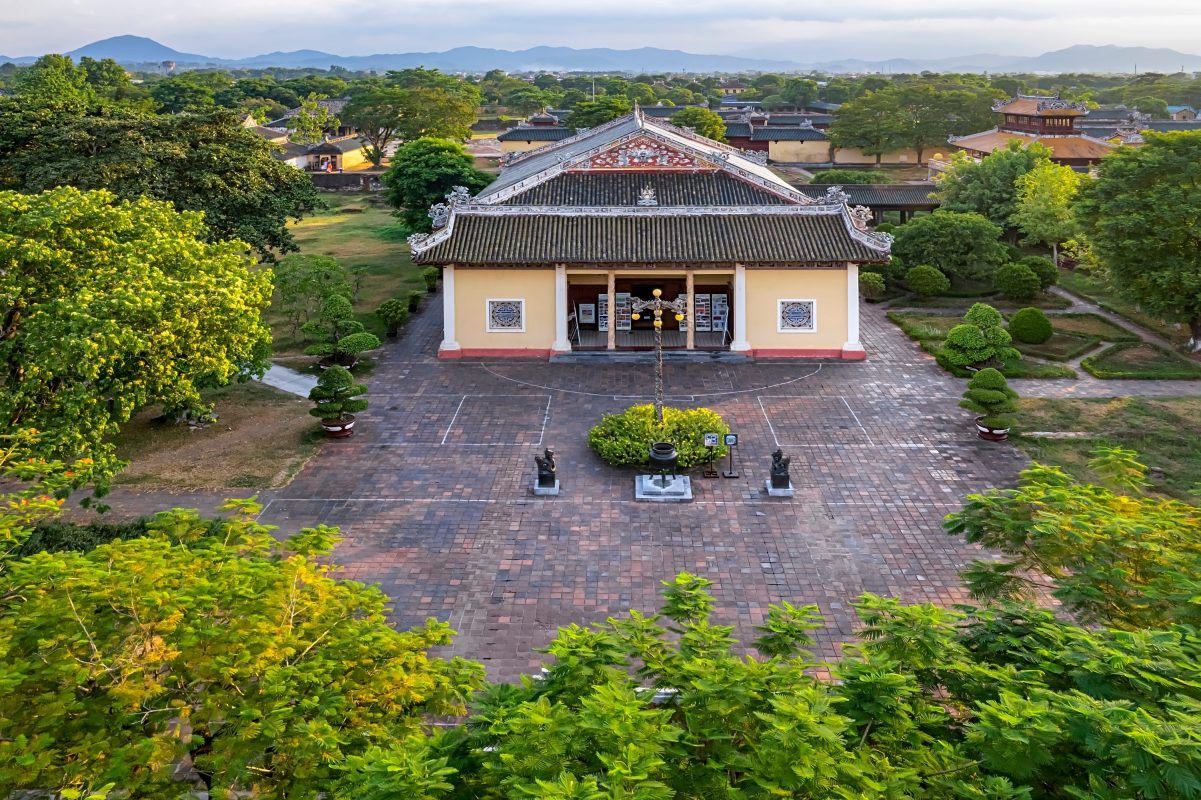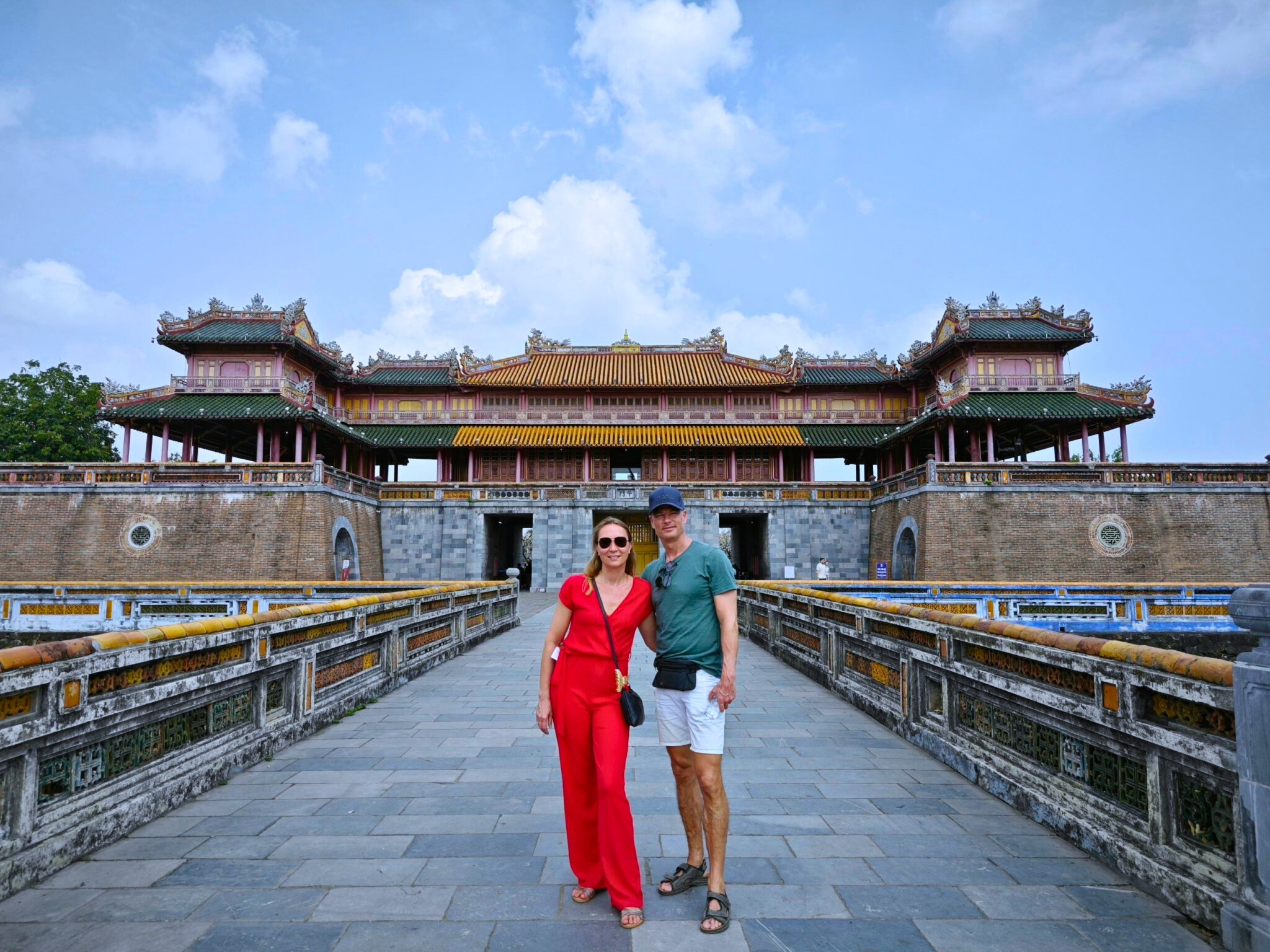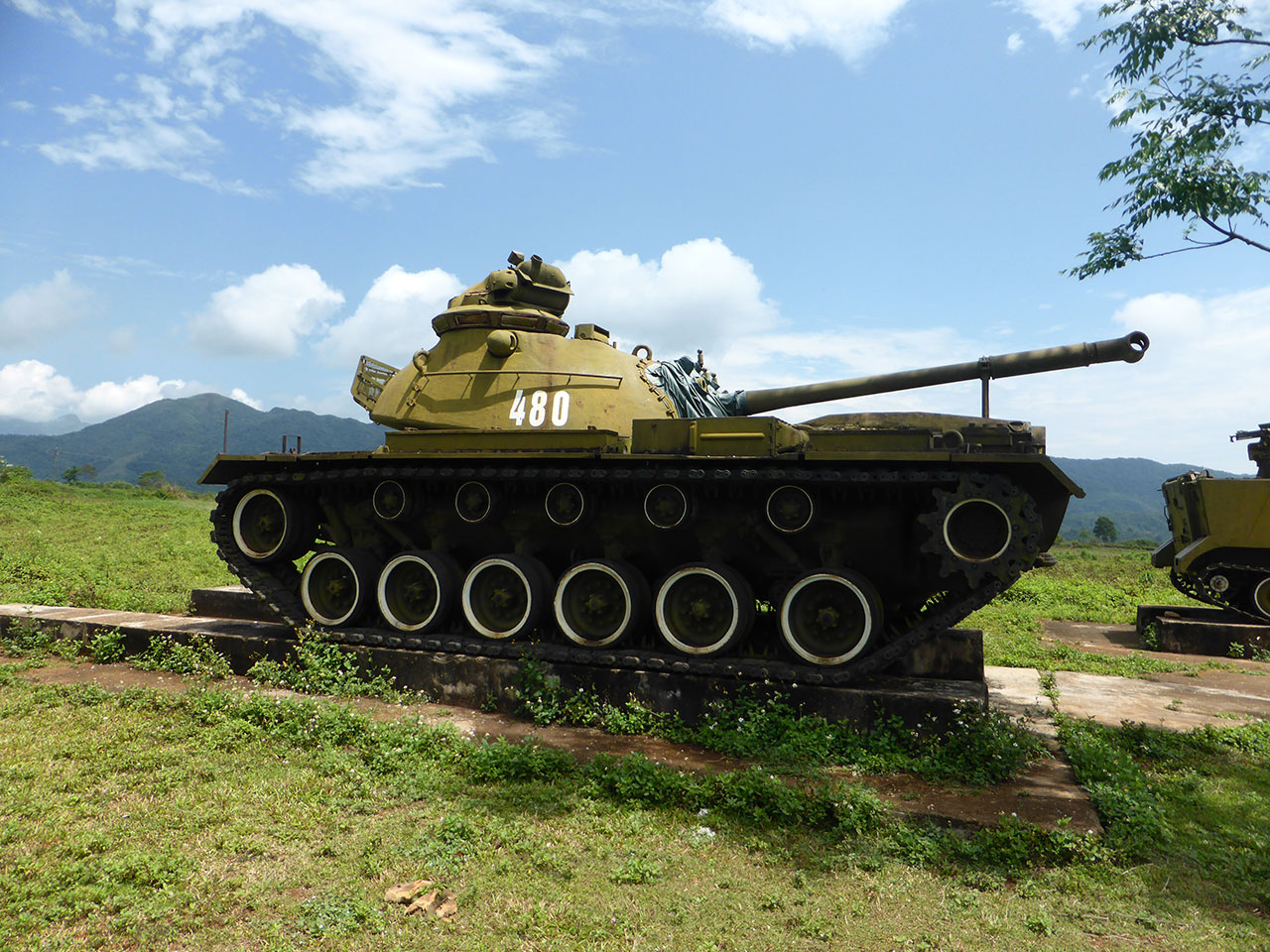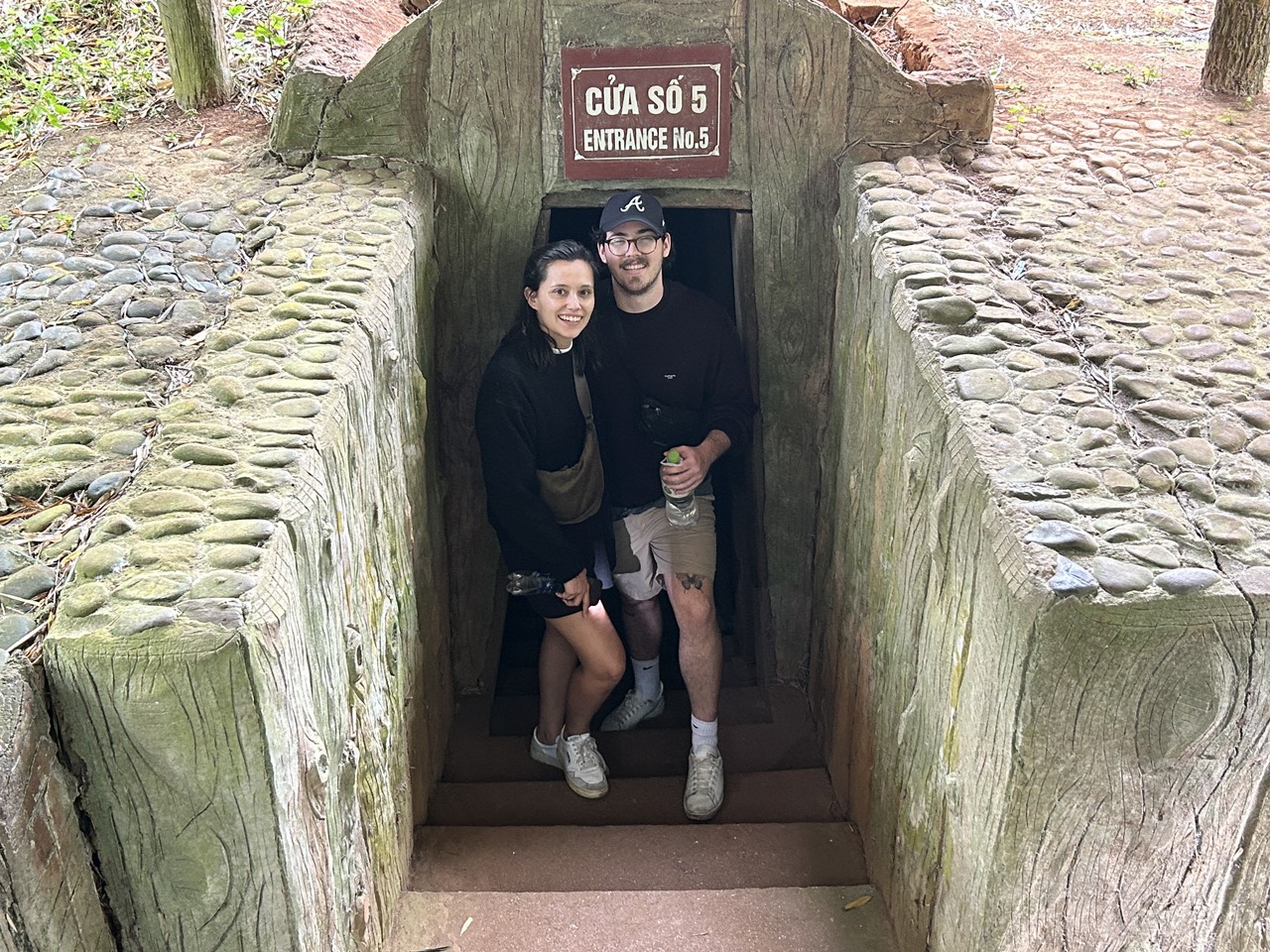Hue Imperial City: UNESCO World Heritage Site – Complete Travel Guide 2025
Standing majestically on the banks of the Perfume River, the Hue Imperial City represents one of Vietnam’s most treasured cultural landmarks. As a UNESCO World Heritage Site since 1993, this ancient citadel continues to captivate millions of visitors with its stunning architecture, rich history, and profound cultural significance.

What Makes Hue Imperial City a UNESCO World Heritage Site?
The Imperial City of Hue earned its UNESCO designation for being an outstanding example of an Eastern feudal capital. Built between 1802 and 1945, it served as the political, cultural, and religious center of the Nguyen Dynasty – Vietnam’s last royal dynasty.
The site meets several UNESCO criteria:
- Architectural Masterpiece: Harmonious blend of Vietnamese traditions with Chinese architectural principles
- Cultural Significance: Represents the pinnacle of Vietnamese royal architecture and urban planning
- Historical Value: Preserves tangible evidence of Vietnam’s feudal system and royal customs
- Unique Design: Features the only remaining example of Vietnamese royal palace architecture
History of the Hue Imperial City
The Nguyen Dynasty Era (1802-1945)
Emperor Gia Long established Hue as Vietnam’s capital in 1802, beginning an ambitious construction project that would span several generations. The city’s design followed strict feng shui principles, with the Perfume River representing the belly of the dragon and the surrounding mountains forming its protective embrace.
“The Imperial City wasn’t just a residence – it was a universe in miniature, reflecting the emperor’s role as the Son of Heaven and mediator between earth and sky.” – UNESCO World Heritage Committee
Key Historical Milestones
| Year | Event | Significance |
|---|---|---|
| 1802 | Construction begins | Emperor Gia Long establishes new capital |
| 1833 | Major expansion | Emperor Minh Mang adds numerous palaces |
| 1968 | Tet Offensive | Significant damage during Vietnam War |
| 1993 | UNESCO designation | Recognized as World Heritage Site |
Architecture and Layout of the Citadel
The Hue Citadel consists of three main sections, each serving distinct purposes and reflecting different aspects of imperial life:
1. The Citadel (Kinh Thanh)
The outermost enclosure spans 520 hectares and is surrounded by a massive wall measuring 10 kilometers in circumference. This fortified area housed government offices, military barracks, and residences for mandarins and soldiers.
2. The Imperial City (Dai Noi)
Within the Citadel lies the Imperial City, a 2.5-kilometer square enclosure where the emperor conducted state affairs. Key structures include:
- Ngo Mon Gate: The magnificent southern entrance reserved for the emperor
- Thai Hoa Palace: The throne room for official ceremonies
- Halls of the Mandarins: Where court officials prepared for audiences
- Nine Dynasty Urns: Bronze vessels symbolizing the emperors’ power
3. The Forbidden Purple City (Tu Cam Thanh)
The innermost sanctum was exclusively reserved for the emperor and royal family. Unfortunately, much of this section was destroyed during the 20th century, but restoration efforts continue to revive its former glory.
Must-See Attractions Within the Imperial City
Noon Gate
Ngo Mon Gate (Noon Gate)
Ngu Phung Pavilion (Five-Phoenix Pavilion)
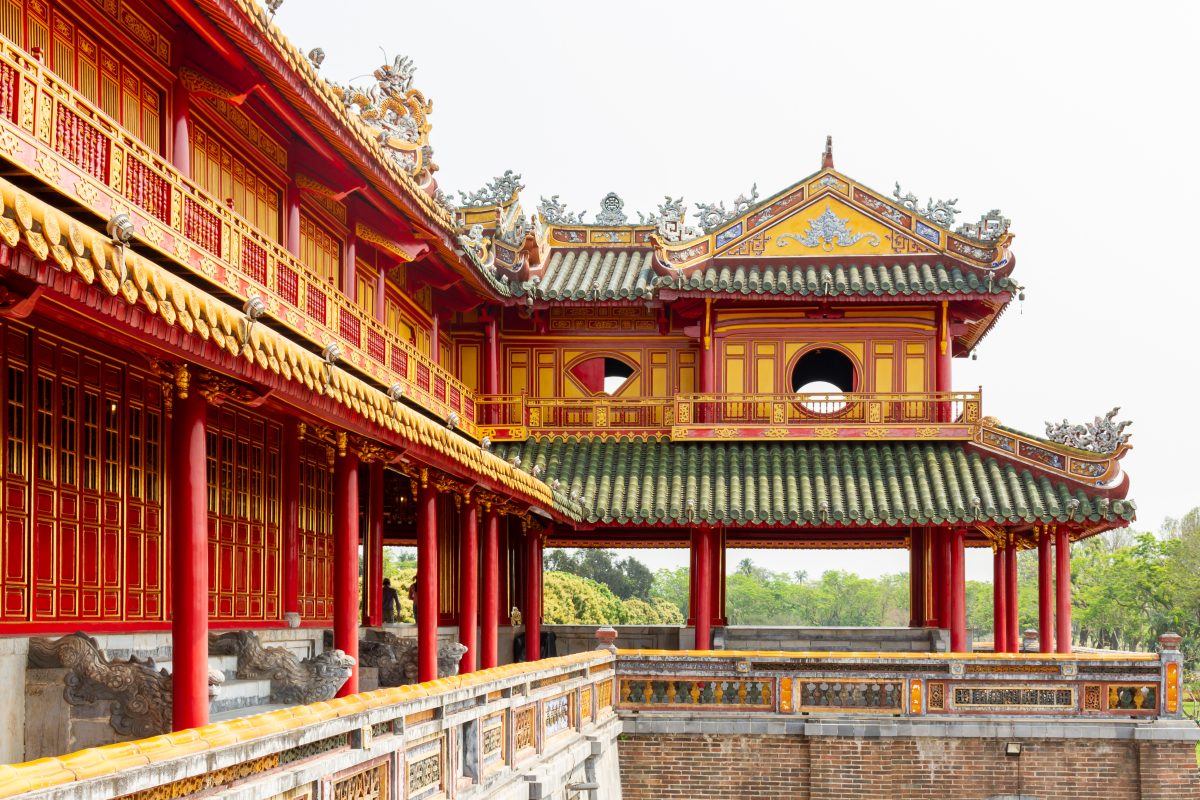
Thai Hoa Palace (Supreme Harmony Palace)
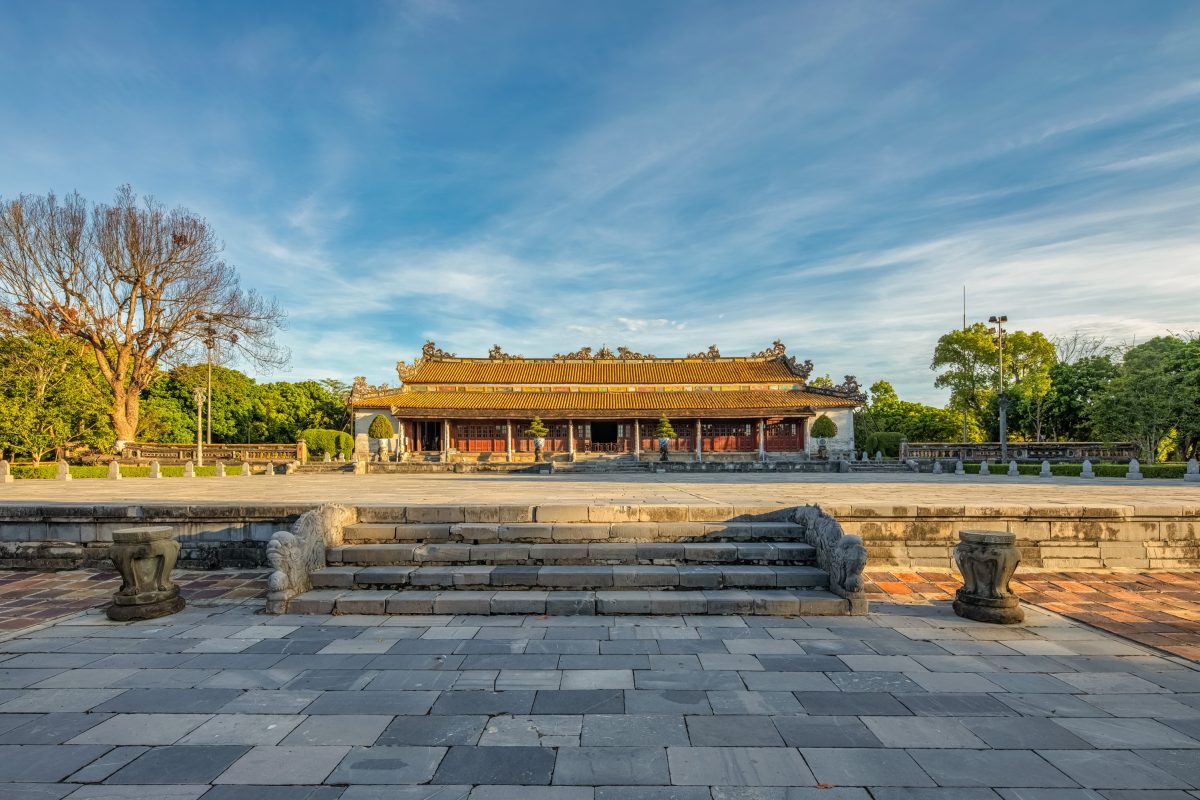
Kien Trung Palace
Duyet Thi Duong Royal Theater
Duyet Thi Duong Royal Theater
The To Temple (The Royal Family Temple)
The To Temple was built in 1821 under the reign of King Minh Mang. The purpose of this project is to worship King Gia Long, founder of the Nguyen Dynasty. Over time, this place became a place of worship for most of the Nguyen Dynasty emperors. However, deposed emperors such as Duc Duc, Hiep Hoa, and Bao Dai were not allowed to worship. Previously, women were also banned from entering this place.
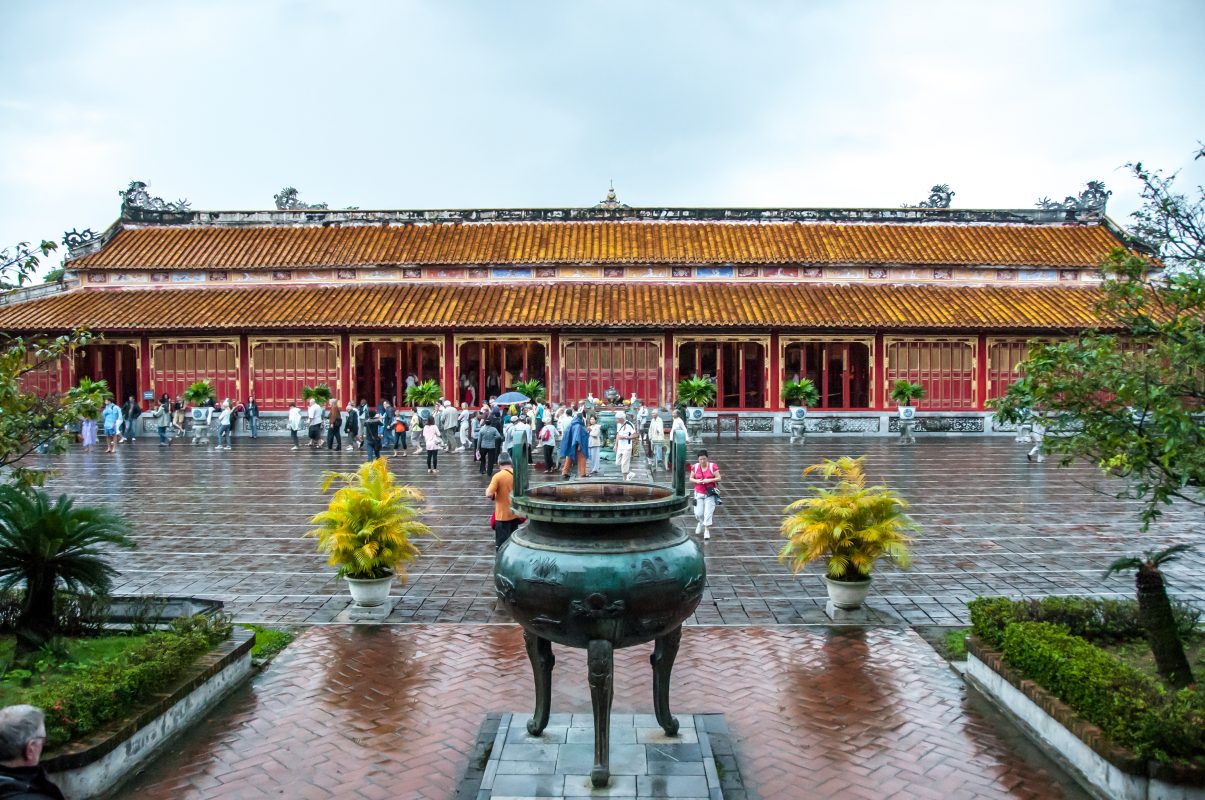
Cung Dien Tho
This area was reserved as the private residence of the Emperor’s mother and grandmother and is now the largest preserved building. It consists of more than 10 buildings surrounded by rectangular walls and connected through a system of covered corridors. The emperor had the habit of passing through this corridor to visit his mother as a daily routine.

Visiting Hue Imperial City: Practical Information
Best Time to Visit
For optimal weather and cultural experiences, consider these seasonal factors:
| Season | Weather | Advantages | Considerations |
|---|---|---|---|
| Feb-Apr | Cool, dry | Perfect weather, festivals | Higher tourist numbers |
| May-Aug | Hot, humid | Fewer crowds | Intense heat |
| Sep-Jan | Cool, rainy | Lush scenery | Occasional flooding |
Entrance Fees and Opening Hours
- Opening Hours: 8:00 AM – 5:30 PM daily
- Adult Ticket: 200,000 VND (approximately $8.50 USD)
- Student Ticket: 40,000 VND (with valid ID)
- Combined Ticket: 530,000 VND (includes royal tombs)
How to Get There
The Imperial City is located in central Hue, easily accessible by various means:
- By Air: Phu Bai International Airport (15km from city center)
- By Train: Hue Railway Station on the North-South line
- By Bus: Regular services from major cities like Hanoi and Ho Chi Minh City
- Local Transport: Taxis, motorbike taxis, or bicycle rentals
Tips for Exploring the Imperial City
Making the Most of Your Visit
- Hire a Licensed Guide: Professional guides provide invaluable historical context and access to areas you might otherwise miss
- Start Early: Arrive when gates open to avoid crowds and heat
- Wear Comfortable Shoes: You’ll walk several kilometers exploring the complex
- Bring Sun Protection: Limited shade in many areas
- Allow 3-4 Hours: Minimum time needed for a comprehensive visit
Photography Guidelines
While photography is generally permitted, observe these guidelines:
- No flash photography inside palace buildings
- Drone photography requires special permits
- Respect restricted areas and ongoing restoration sites
- Best lighting for photos: early morning or late afternoon
Beyond the Imperial City: Related Attractions
Enhance your Hue cultural experience by visiting these nearby sites:
Royal Tombs of the Nguyen Emperors
- Tomb of Tu Duc: Most elaborate tomb complex with lakes and pavilions
- Tomb of Minh Mang: Perfect symmetry and architectural harmony
- Tomb of Khai Dinh: Unique blend of Vietnamese and European styles
Thien Mu Pagoda
This iconic seven-story pagoda overlooks the Perfume River and serves as Hue’s unofficial symbol. Dating from 1601, it predates the Imperial City and offers stunning views.
Conclusion: Why Hue Imperial City Deserves Your Visit
The Hue Imperial City stands as a testament to Vietnam’s rich cultural heritage and architectural prowess. As a UNESCO World Heritage Site, it offers visitors an unparalleled glimpse into the grandeur of Vietnamese imperial life and the sophisticated urban planning of the Nguyen Dynasty.
Whether you’re a history enthusiast, architecture lover, or cultural explorer, the Imperial City provides an immersive experience that connects you with centuries of Vietnamese tradition. From the majestic Thai Hoa Palace to the intricate Nine Dynasty Urns, every corner tells a story of power, artistry, and cultural synthesis.
Plan your visit to this extraordinary site and discover why millions of travelers consider the Hue Imperial City an essential stop on any Vietnam journey. For more information about traveling in Vietnam, explore our comprehensive guides to Vietnam’s top destinations and start planning your unforgettable adventure today.


